Seaweeds of the South African South Coast


Order Ceramiales
Family Rhodomelaceae
Hawaiia sp 1
Plants forming a dense blackish turf up to 5 mm high. Axes with (10-) 12-14 pericentral cells per segment throughout the thallus, without further cortication. Prostrate axes with straight (horizontal) apex, giving off ascending filaments at intervals of about five segments. Rhizoids cut off from pericentral cells at the ventral side of prostrate filaments , up to three or four rhizoids per segment, unicellular, with a terminal digitate hapteron. Prostrate axes up to 160 µm in diameter, the segments about half as long as broad. Erect filaments several times pseudodichotomously branched at intervals of 5-12 segments, origin of laterals exogenous or at the base of a trichoblast; basal segment of lateral not distinguishable from corresponding segment of main axes, being similar in height and number of pericentral cells, the two branches confluent for the proximal one and a half segments. Erect axes at their base up to 140 µm in diameter , gradually tapering towards the apex, the apical cells being ca. 12.5 – 15 µm in diameter; segments 0.3-0.5 times as long as broad. Trichoblasts spirally arranged, but not present on every segment, simple, usually not over 7 cells long, soon deciduous.
Tetrasporangia in more or less tortuous series in subterminal sections of the erect filaments; sporangia globose, up to 50 (-60) µm in diameter, tetrahedrally divided, with two long cover cells. Male stichidia spindle-shaped to cylindrical, at maturity ca. 130 x 35 µm, with a single-celled pedicel and a sterile apical cell, but male trichoblasts with no other sterile parts. Cystocarps ellipsoid to almost globose, ca. 250 µm in diameter, with a narrow ostiole.
Collections, ecology and distribution
So far collected between Robberg (Plettenberg Bay) and the Tsitsikamma Coastal National Park (31-32) but probably much more widespread. This species forms low turfs on animal substrata (molluscs, ascidians) in wave-exposed locations, from the lower eulittoral to shallow sublittoral zone. Our specimens were growing together with several other species including Anotrichium tenue, Centroceras clavulatum and Herposiphonia tenella.
Note: The genus Hawaiia was maintained by Abbott (1999) on the basis of three characters that separate it from Polysiphonia. All three of these characters are present in our species, namely: 1. Possession of unbranched trichoblasts, 2. The basal segment of laterals being similar to the corresponding segment of the bearing axis both in length and number of pericentral cells, and 3. Spermatangial stichidia developing from the entire trichoblast primordium, thus bearing no sterile parts, other than a one-celled pedicel and a single apical cell. However, our species differs from the type and only other species, H. trichia, by its somewhat larger size (erect axes up to only 2 mm tall in H. trichia), the higher number of pericentral cells (8-11 in H. trichia) and the thicker axes (erect axes to 60-70 µm in H. trichia).
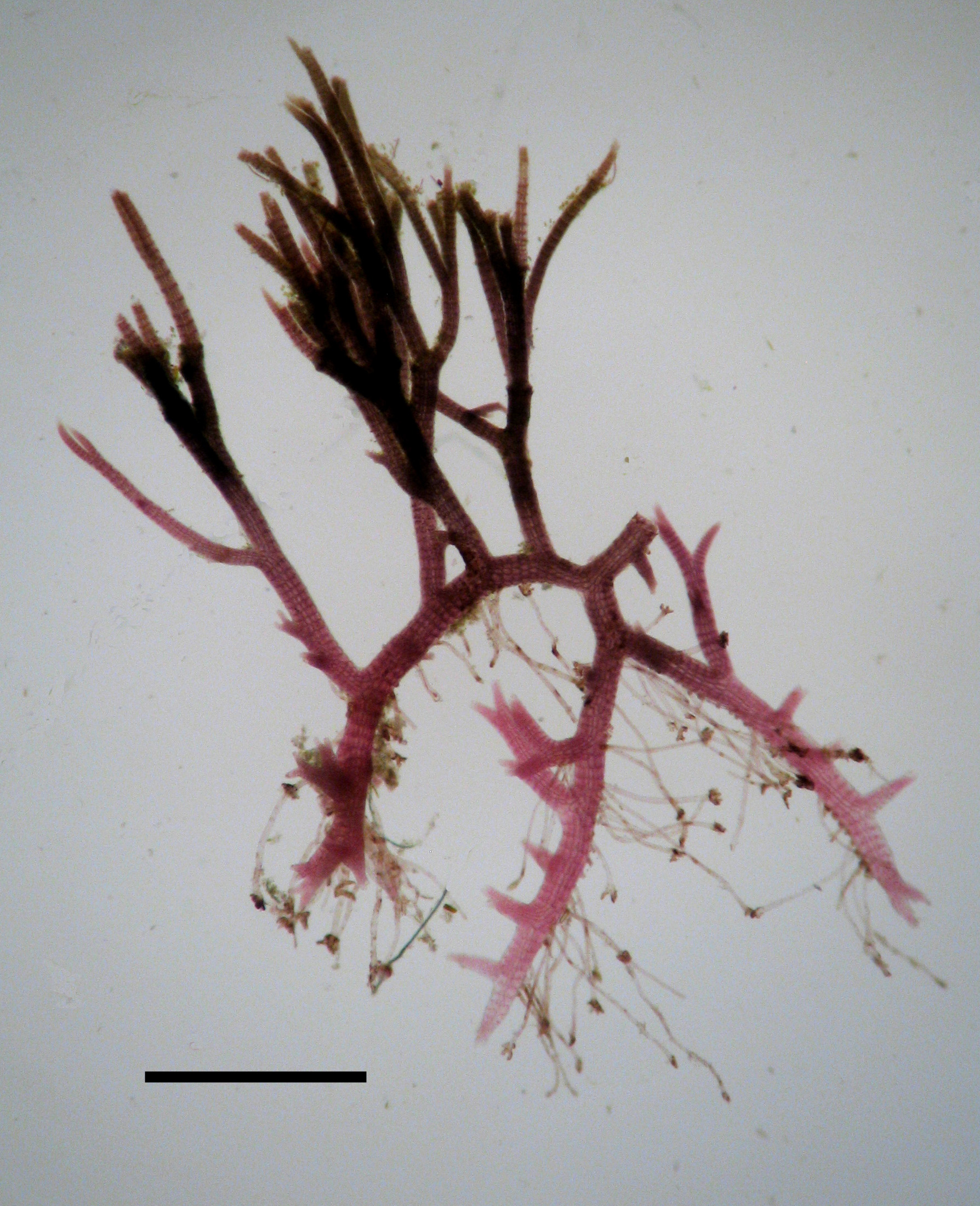
Hawaiia sp I, fresh material, Nature’s Valley (Scale bar = 1mm).
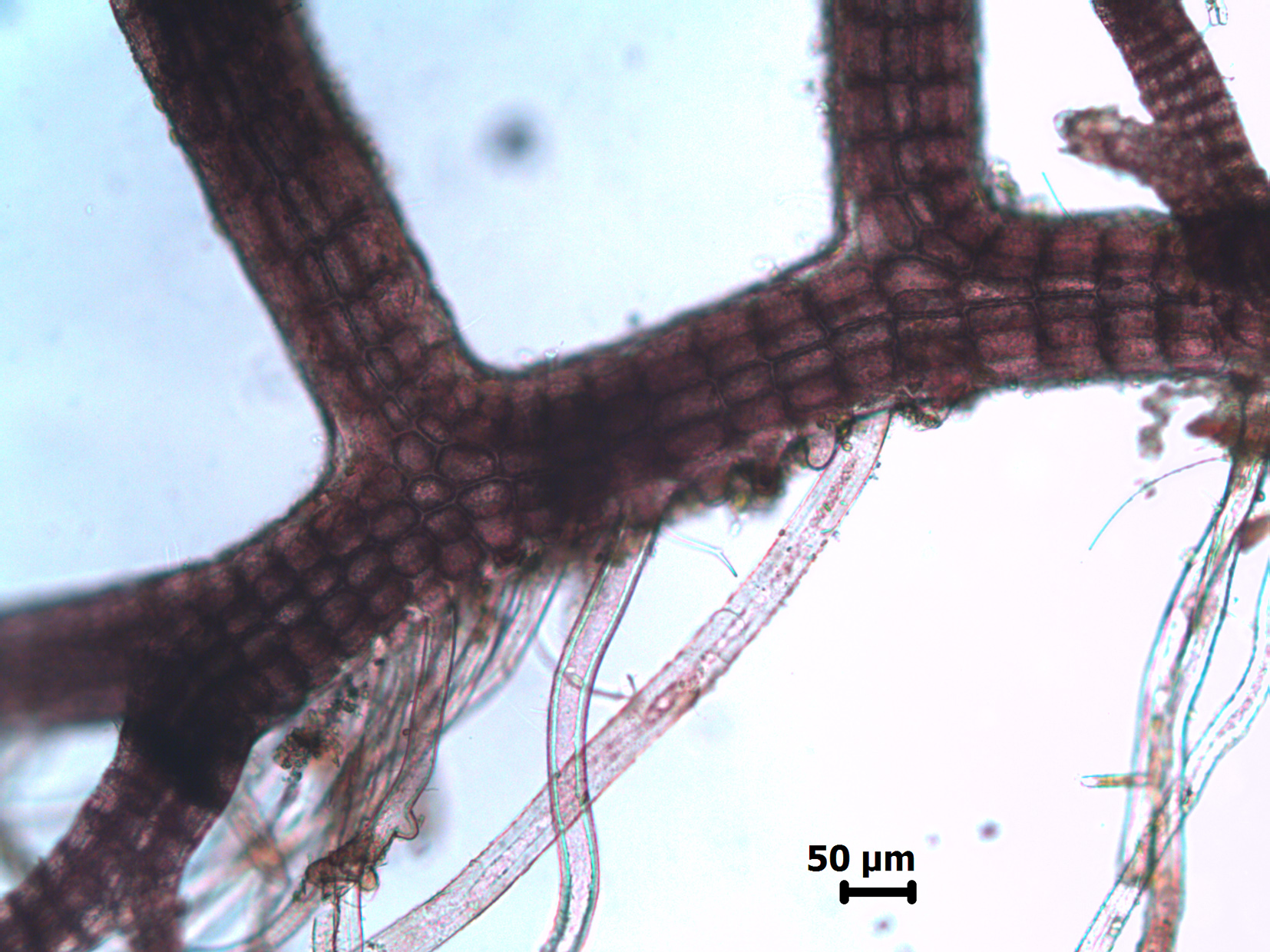
Hawaiia sp I, fresh material, Nature’s Valley, showing junction of erect and prostrate axes, and attachment rhizoids.
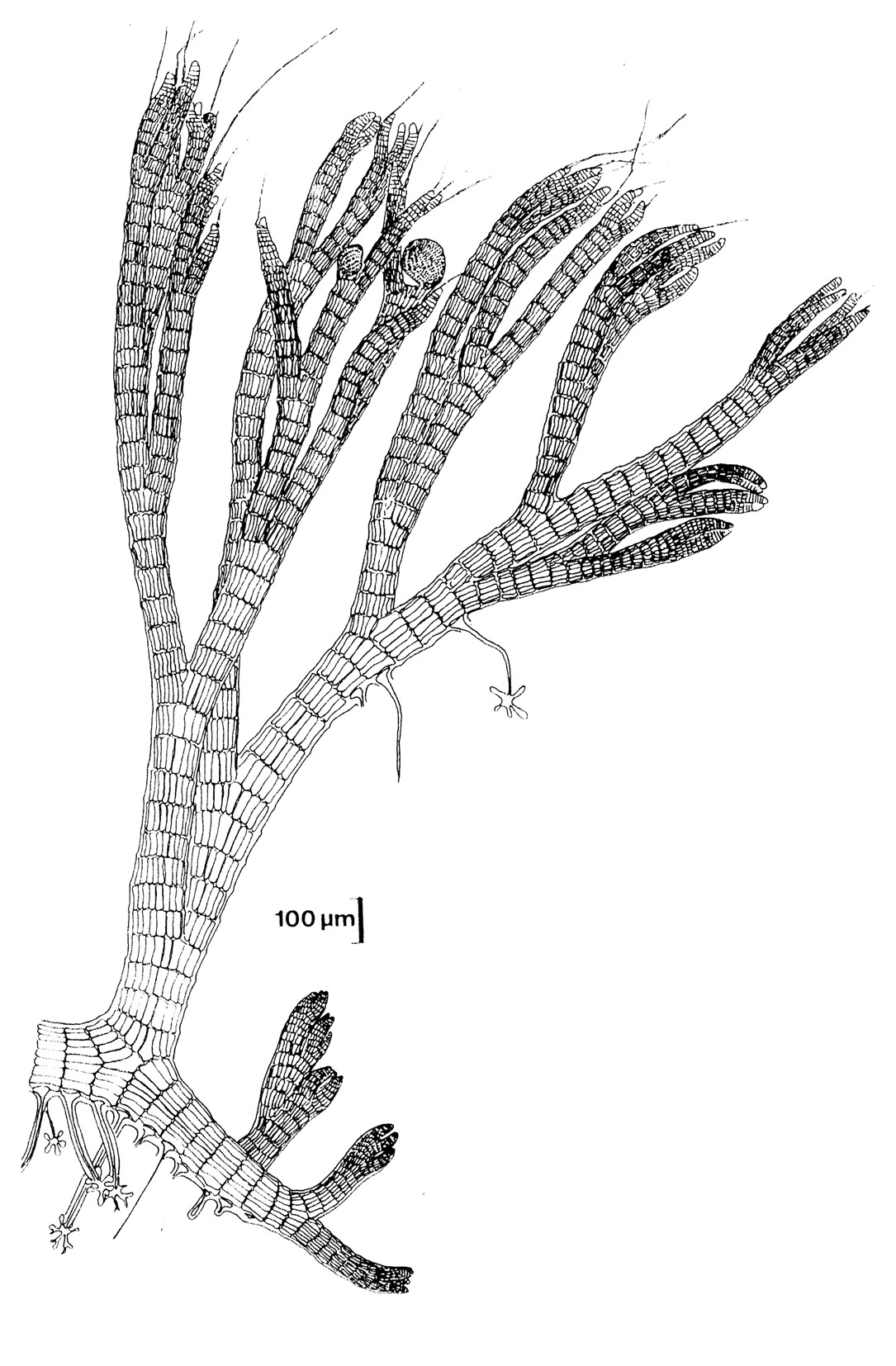
Hawaiia sp., microscopic habit of female thallus.
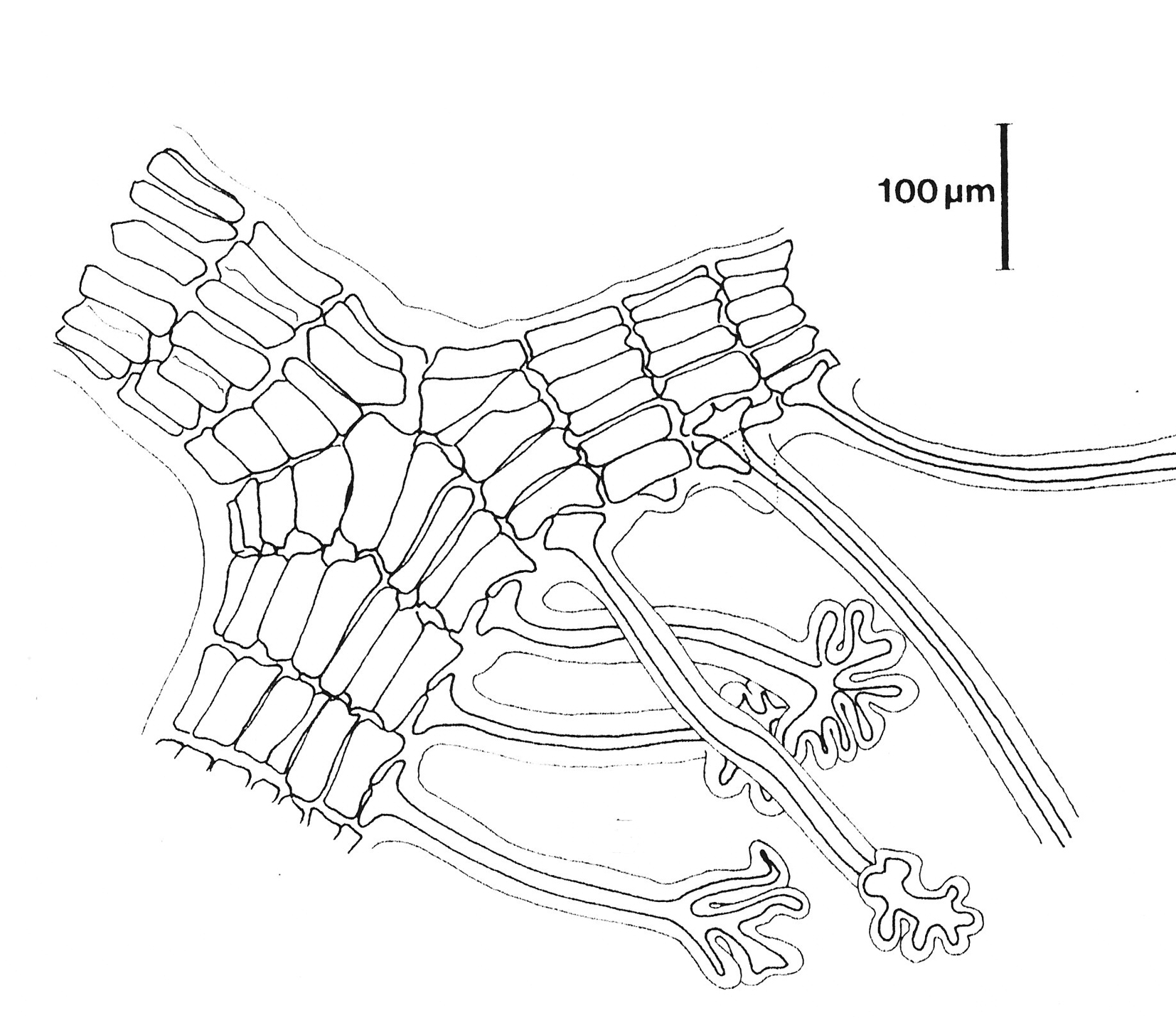
Hawaiia sp., detail of prostrate system.
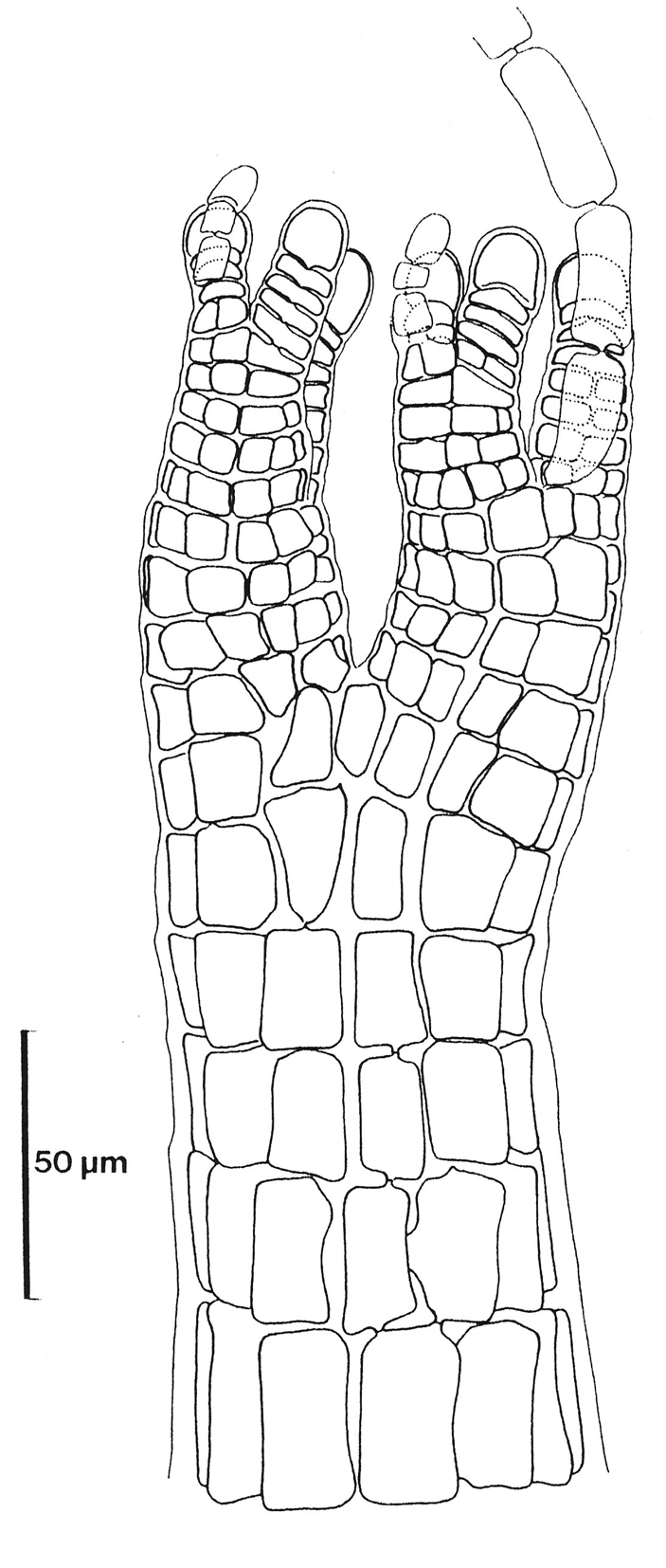
Hawaiia sp., apex of erect axis, showing frequent association of laterals with trichoblasts.
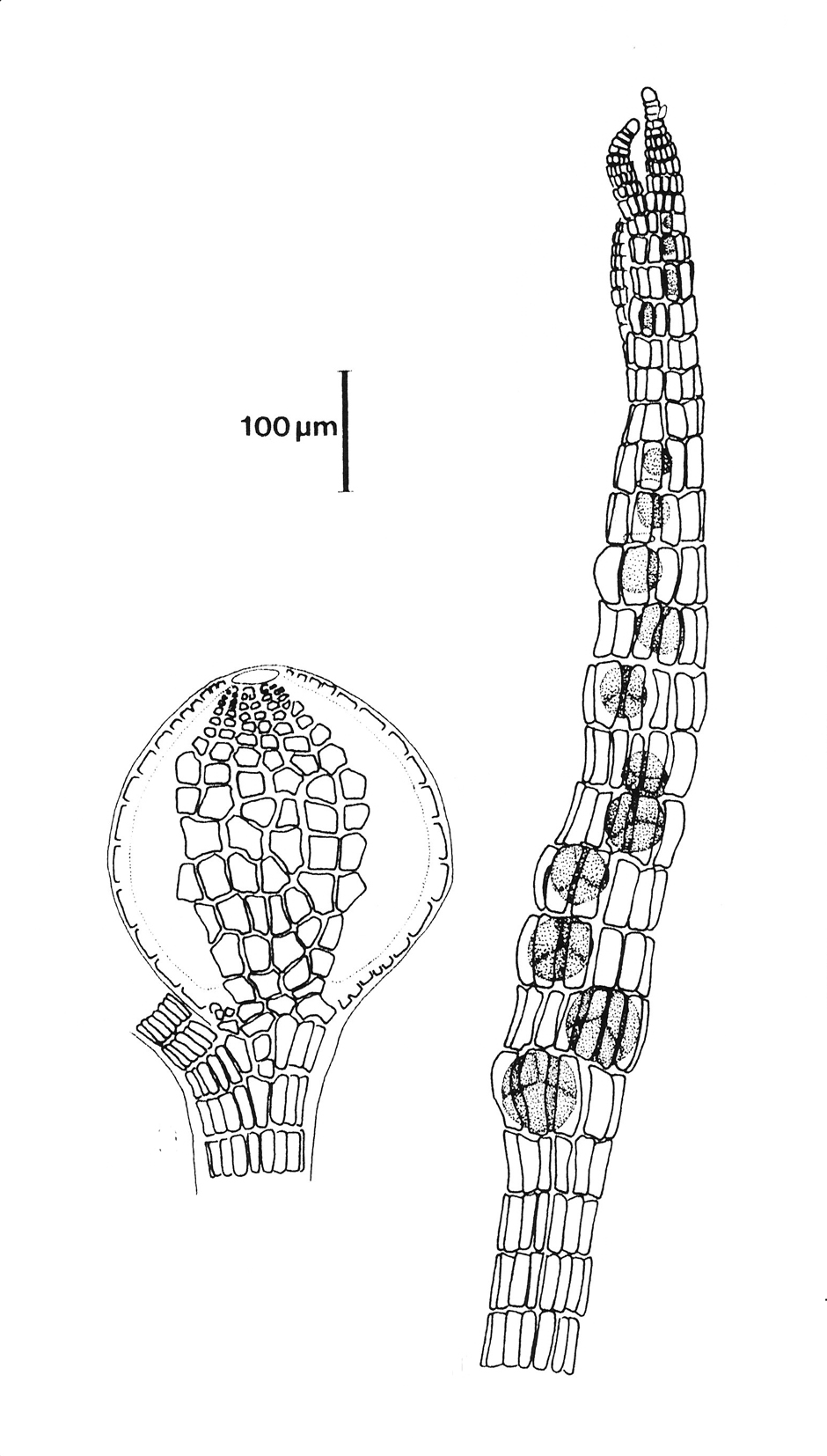
Hawaiia sp., cystocarp (left) and tetrasporic axis (right).
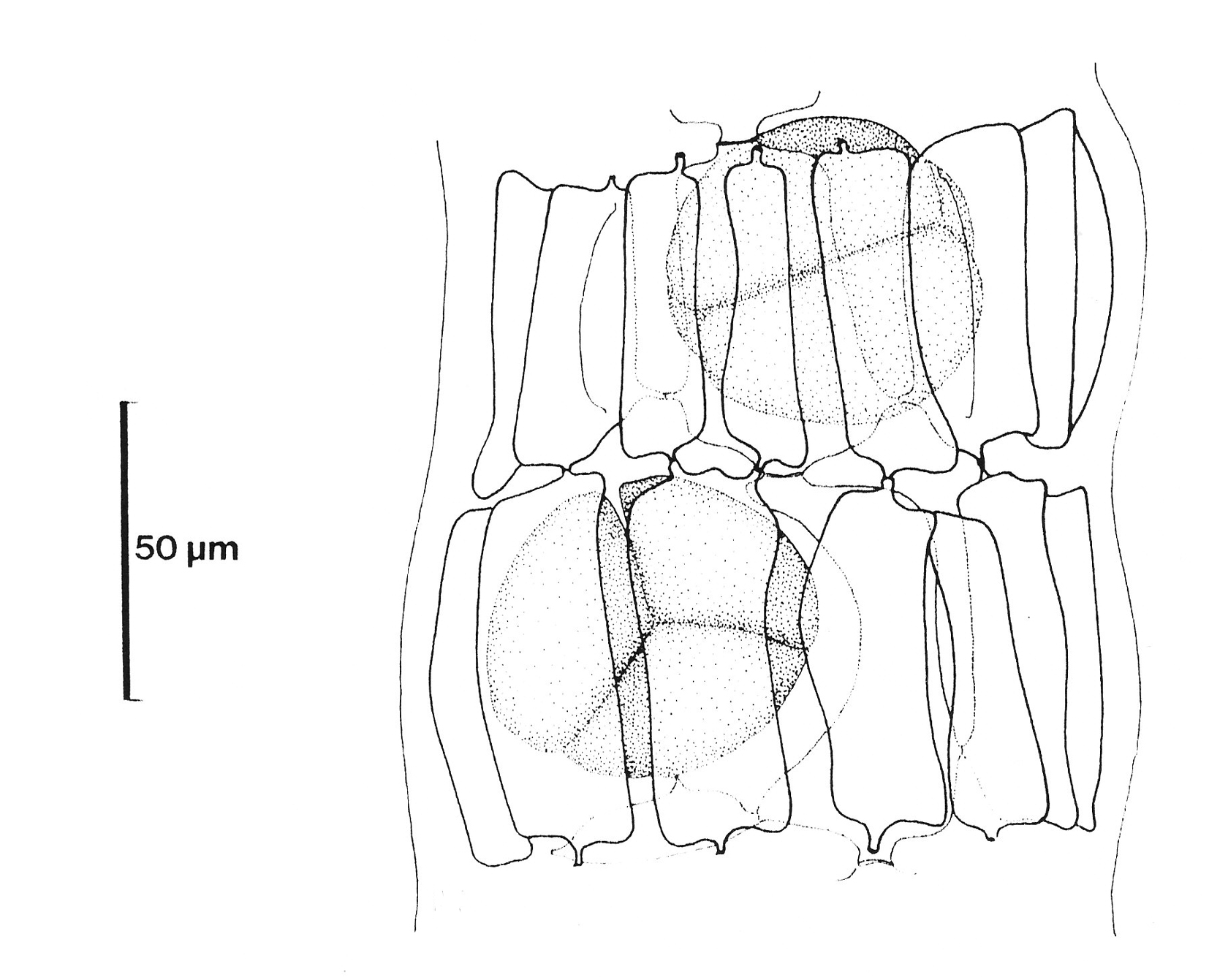
Hawaiia sp., detail of tetrasporangia.
References Hawaiia
Abbott, I.A. 1999. Marine Red Algae of the Hawaiian Islands. Bishop Museum Press. Honolulu, Hawai’i, 477 pp.
Cite this record as:
Anderson RJ, Stegenga H, Bolton JJ. 2016. Seaweeds of the South African South Coast.
World Wide Web electronic publication, University of Cape Town, http://southafrseaweeds.uct.ac.za; Accessed on 07 December 2025.